Treating Anemia with Cord Blood
Every year, more doctors and researchers look to stem cell therapy as a treatment for anemia. According to studies, survival rates for patients receiving a stem cell transplant are 90%, even five years after treatment. Cord blood, which holds the most adaptable stem cells available, is becoming the preferred therapy for this blood condition.
What is anemia?
Anemia is caused by damaged bone marrow, the organ in your body producing healthy red and white blood cells. When this organ is damaged, blood cell production slows down, and may even stop completely. Radiation treatments, toxic chemicals, drugs and infections all contribute to anemia.
When your body can’t produce enough red blood cells, oxygen levels are drastically reduced. Since these cells transport oxygen throughout your system, reduced oxygen will lead to negative – and potentially life-threatening – side effects. Anemia is usually caused by excessive blood loss, and can disappear over time. However, some cases of anemia last for years.
A rare form of the disease, aplastic anemia stops production of blood cells. This causes fatigue and may lead to infections and excessive bleeding. This condition happens at any age, and often occurs suddenly. If left untreated, aplastic anemia can worsen over time.
Anemia is often a result of blood or immune disorders. Conditions that usually lead to anemia include:
- Crohn’s disease
- Rheumatoid arthritis
- Ulcerative colitis
- Lymphoma
- Chronic kidney disease
- Severe infections (HIV/AIDS, hepatitis B, hepatitis C, etc.)
In some cases, anemia isn’t caused by another condition, but poor oxygen levels in the body. Proper diet and healthy eating can typically prevent anemia. In certain situations, anemia develops regardless of how healthy the patient is.
Major types of anemia include:
- Aplastic anemia – while rare, this condition is extremely dangerous, and comes from a loss of red blood cells in bone marrow. Autoimmune diseases often lead to aplastic anemia.
- Iron deficiency anemia – when your body has lower-than-normal levels of iron, the bone marrow can’t create new cells. This is usually caused by rapid blood loss, but may also come from certain drugs, like aspirin or anti-inflammatory medications.
- Vitamin deficiency anemia – inadequate amounts of B-12 and other essential vitamins often leads to lower red blood cell count. Unhealthy diet choices, or the body’s inability to absorb B-12 and folate, will lead to this kind of anemia.
Symptoms of anemia
Major symptoms of anemia include:
- Fatigue
- Irregular heartbeat
- Pale skin
- Frequent infections
- Easy bruising
- Rashes
- Dizziness
- Constant headaches
- Shortness of breath
- Nosebleeds
Stem cell treatments
Doctors can treat anemia with stem cell therapy, which allows the organs to produce more healthy blood cells. Stem cells can be found in bone marrow or in cord blood.
If a patient has a matching donor, the diseased bone marrow cells are drained using chemotherapy, and donated cells are introduced into the patient’s system. Doctors inject new cells into the veins, where they travel to damaged bone marrow and help generate new blood cells.
While cord blood treatments are still under research, medical professionals often state cord blood has one distinct advantage over bone marrow transplants – cord blood stem cells don’t require an exact match. This means patients using umbilical cord cells may have more treatment options, and lower chances of a rejected transplant due to mismatched cells.
After treatment
Doctors usually monitor patients months after treatment, checking for healthy blood cell counts. Patients must remain on the lookout for signs of infection, since transplants increase the chance for both major and minor infections several months after treatment.
Find out more about life-saving cord blood treatments here.

